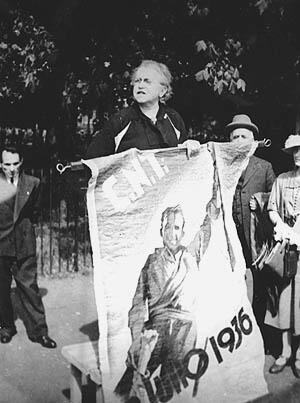May Day: Celebrating through protest
Happy May Day! Originally, May Day was a pagan springtime festival, roots of which survive in the traditions of flower-festooned maypoles and the crowning of the “Queen of the May.” Since the late 19th century, it has also been a workers’ holiday. Though in the US it has been officially replaced (and I would argue, coopted) by Labor Day in September, May Day remains an occasion for social protest of many kinds.
May Day emerged as a workers’ day in 1886, when it was chosen by American labor unions as the day to begin a general strike in support of the eight-hour day. Workers across the country rallied on May 1, and in several cities with active labor organizations protesting continued into the following days. In Chicago, a city with a large immigrant and anarchist population, violence erupted on May 3rd when police opened gunfire on the striking workers. The following day, as laborers gathered in Haymarket Square to protest the police shootings, a bomb was thrown into the meeting and the ensuing gunfire killed seven police officers and at least four workers. With no conclusive evidence of who threw the bomb, anarchists were blamed; a show trial jury found eight guilty and sentenced seven to death.
The Haymarket massacre, as it came to be known, not only sparked the new commemoration of May Day as International Workers’ Day; it also awoke many people to the injustices around them. Emma Goldman attributed her own political awakening to the Haymarket affair, calling it in her autobiography “the most decisive influence” on her life.
Though May Day is not officially celebrated as a workers’ holiday in the US (as it is in many other countries in Europe, South America, and Asia), it remains an opportunity to recognize both the impact of labor and the ongoing injustices in our world. In the early 21st century, in which labor issues are so deeply imbricated with immigration issues, May Day has become an opportunity to demand immigrant rights and amnesty for undocumented workers. This year, it’s an obvious time for the Occupy movement to launch a new round of springtime protests across the country. Occupy Wall Street has called for a May Day strike: “A Day without the 99%.” (The Occupy May Day 2012 Facebook page quotes JWA’s other favorite Emma, adapting the words of Lazarus’ “The New Colossus” to invite those “huddled masses” to become Occupiers.)
May Day is particularly on my mind this year, as I’ve been working on the next piece of JWA’s Living the Legacy social justice education project, which focuses on Jews and the Labor Movement (stay tuned for its launch this fall!). I’m inspired by the flexibility of May Day and its adaptation over time from a pagan holiday to a secular spring festival to a workers’ day and now to a more expansive day of social justice protest. I think back to how Emma Goldman began studying anarchism in the wake of the Haymarket massacre, turning the tragedy into a starting place for her own learning and activism and ultimately becoming a leading and innovative anarchist activist in her own right. What injustices in today’s world fire you up and inspire your leadership? How can we learn to find in tragedy the inspiration to change the world?







